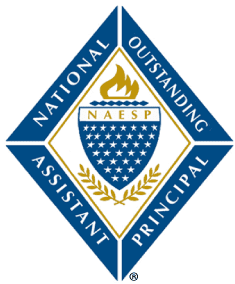
Lauren M. Holthaus
Cora Kelly School for Math, Science, and Technology
Alexandria, Virginia
lauren.holthaus@acps.k12.va.us
Best Practices
1) Serving as an assistant principal during an unprecedented pandemic often means that a disproportionate amount of time is spent managing logistics rather than serving as an instructional leader. While I have had to lean in to the responsibility of managing a wide variety of tasks related to the implementation and communication of virtual learning expectations; the reopening of our building with respect to safety protocols, mitigation measures, organizational spacing, and the utilization of a prioritization matrix to return students to hybrid instruction; and finding ways to engage underserved families who have been disproportionally impacted by this pandemic, I have found myself taken away from tasks related to instruction.
How then, in that description of the ways in which I have NOT been an instructional leader, could there possibly be a best practice? As the assistant principal at this school, I see myself as the gap filler. The person who stands up and is willing to do whatever is needed to ensure that students, staff, and the community have the best of what we can offer. Over the course of the past three school years, each interrupted for different and yet equally challenging ways, I have modeled having the flexibility to learn to fill these gaps as I go, to give myself and others grace, and to always be “all in” for our students. Modeling a learning mindset for all aspects of my job and saying, “I don’t know, but let’s find out” has been one of the most effective practices that I have been able to lean on during my time as an assistant principal. In practicing what I preach, I have become vulnerable in a way that I believe allows staff to be vulnerable in their learning during a time when we are all fragile and sometimes clinging to old method and structures that may not be the best way ahead to improve instruction in a constantly changing world. I see myself as a lead learner even when I can’t necessarily spend the amount of time I would like to on instructional leadership (and am instead learning about how many desks can safely fit in a classroom) and in modeling this, demonstrate to staff that they can do the same for themselves and can expect the same of our students. During these overwhelming times, we don’t have to do how to do everything perfectly, we just have to keep moving forward in our learning.
2) Focusing on systemic alignment of goal-setting and performance outcomes is another best practice that I seek to incorporate into my work as an assistant principal. As the leader of our school improvement planning process, I begin each year by reviewing our district strategic plan, our school-based data points, reflecting on where we fell short or exceeded our goals in the previous year, and then set our targets for the following year. Staff then work together to brainstorm instructional practices that we can leverage to foster improvement. Specifically, we reflect on the schoolwide initiatives that have been focus areas for our work over the past several years (AVID, GLAD, and RULER) and look for clear strategies that we believe will result in the achievement of our goals. We then develop internal measurement methods to ensure that these strategies are being implemented and then look for both internal and external data collection that will tell us if we are doing the right things to achieve our short-term and long-term goals.
I incorporate this process into my goal-setting with teachers as well. As we sit down at the beginning of the year, we first begin by looking at how they can support our schoolwide goals in their own classrooms as they set their targets for student academic growth. We reflect together on the current data and develop their professional learning plans to support their own learning as well as the learning of all their students. This then becomes a focus of the feedback I provide during walkthroughs and observations and the basis of our discussions of their own professional growth. By aligning the data with our instructional efforts as a school and supporting individual staff members’ work towards attaining our goals, we are better able to meet the needs of our diverse and dynamic community of learners.


